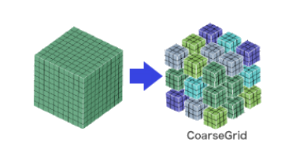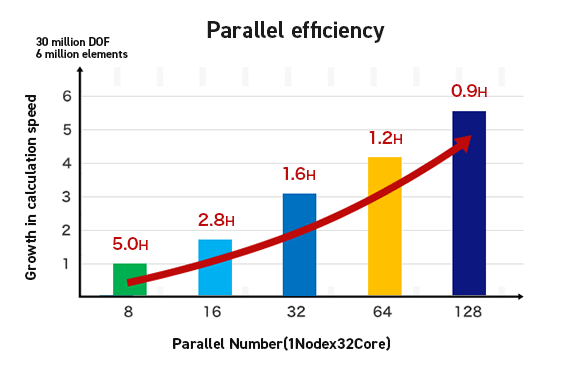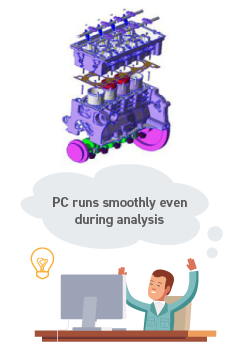About ADVENTURECluster's solver CGCG method
Unique solution combining region segmentation and iterative method
High parallel performance and reduced memory consumption
In general numerical programs using the finite element method, the decline in parallel efficiency becomes a major problem as the number of parallels increases. In addition, as the number of nodes increases, the larger the matrix to be solved becomes, the more memory is required, requiring a high-specification computer. However, ADVENTURECluster has developed a unique solution (*CGCG method, a hybrid solution method with the direct method) that maintains high parallel efficiency and reduces memory consumption even when the number of parallels increases.
※CGCG法(Coarse Grid Based Conjugate Gradient)
| General application | ADVENTURECluster | |
|---|---|---|
| No. of parts | 1~10 parts | 1~500 parts |
| No. of nodes | About 1 million max. | About 30 million max.
*Achieved;200 million nodes |











